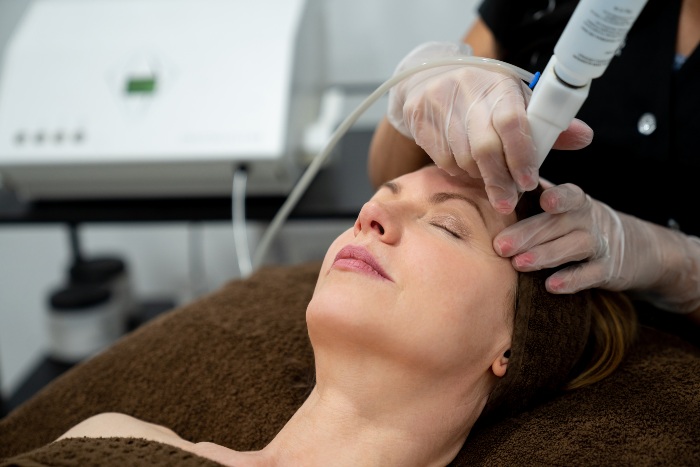Laser treatments have become increasingly popular in the realm of dermatology and cosmetic procedures, especially for addressing various skin texture issues. Whether you’re dealing with rough patches, acne scars, or signs of aging, laser therapies offer a range of solutions to help improve skin texture. This guide will walk you through what to expect from Laser Treatment for Face in Dubai for skin texture, including the different types available, the procedure itself, recovery, and results.
1. Understanding Skin Texture Issues
1.1 Common Skin Texture Concerns
Skin texture issues can manifest in several ways, including:
- Roughness: Often caused by sun damage, dry skin, or aging, resulting in uneven skin.
- Acne Scars: Indentations or raised areas on the skin left after acne lesions heal.
- Fine Lines and Wrinkles: Develop over time due to aging and loss of collagen.
- Enlarged Pores: Often associated with oily skin, leading to a coarse appearance.
1.2 How Laser Treatments Help
Laser treatments work by targeting specific skin layers to promote healing, stimulate collagen production, and enhance skin renewal. This results in smoother, more even skin texture over time.
2. Types of Laser Treatments for Skin Texture
2.1 Ablative Lasers
Ablative lasers, such as CO2 and Erbium lasers, remove the outer layers of skin to reveal smoother skin underneath. They are highly effective for deeper scars and significant texture issues but typically require longer recovery times.
2.2 Non-Ablative Lasers
Non-ablative lasers, like Nd
and fractional lasers, work by heating the underlying skin without damaging the surface. These are less invasive, offer minimal downtime, and are suitable for treating mild to moderate texture issues.2.3 Fractional Lasers
Fractional lasers combine elements of both ablative and non-ablative lasers. They treat only a fraction of the skin at a time, promoting faster healing while still effectively improving skin texture. Fractional treatments can address fine lines, scars, and overall skin tone.
3. What to Expect During the Treatment
3.1 Consultation
Before the treatment, you’ll have a consultation with a qualified dermatologist or aesthetic practitioner. They will assess your skin type, discuss your concerns, and recommend the most appropriate laser treatment. Expect to go over your medical history, any medications you’re taking, and your skincare routine.
3.2 Pre-Treatment Preparation
In preparation for your laser session, you may be advised to avoid certain medications or skincare products that can increase sensitivity, such as retinoids or exfoliants. It’s also essential to protect your skin from the sun before treatment.
3.3 The Procedure
- Anesthesia: Depending on the type of laser and your comfort level, a topical anesthetic or numbing cream may be applied.
- Treatment Process: During the procedure, the practitioner will use a handheld laser device to deliver precise energy to the targeted areas. The duration of the treatment can vary from 30 minutes to a couple of hours, depending on the size of the area being treated.
- Sensation: You may feel a warming sensation or slight discomfort, akin to a rubber band snapping against the skin. Most patients tolerate the procedure well.
4. Recovery and Aftercare
4.1 Immediate Post-Treatment Effects
Following the treatment, it’s common to experience:
- Redness and Swelling: The treated area may appear red and swollen, similar to a sunburn. This usually subsides within a few days.
- Peeling or Flaking: For ablative treatments, you might notice peeling as the skin heals. This can last several days to weeks.
4.2 Aftercare Guidelines
To ensure optimal recovery:
- Sun Protection: Avoid sun exposure and apply a broad-spectrum sunscreen to protect healing skin.
- Gentle Skincare: Use mild, non-irritating cleansers and moisturizers. Avoid products with active ingredients until the skin has healed.
- Hydration: Keep the skin well-hydrated to promote healing.
4.3 Follow-Up Appointments
Regular follow-ups with your practitioner are crucial to monitor healing progress and discuss any concerns you may have.
5. Results and Expectations
5.1 Timeline for Results
Results from laser treatments for skin texture may not be immediately visible. Initial improvements can typically be seen after a few days to weeks, but optimal results usually become apparent after several months as collagen production continues.
5.2 Longevity of Results
The longevity of results can vary based on factors such as skin type, the specific treatment used, and individual skincare routines. Generally, results can last anywhere from several months to a few years. Maintenance treatments may be recommended to prolong effects.
6. Conclusion
Laser treatments for skin texture offer effective solutions for various concerns, ranging from acne scars to signs of aging. By understanding the types of laser therapies available, the treatment process, recovery expectations, and potential results, patients can make informed decisions about their skincare journey. Always consult a qualified practitioner to determine the best treatment for your individual needs and to ensure a safe, effective experience. With the right approach, laser treatments can significantly enhance skin texture, leaving you with smoother, healthier-looking skin.






Comments